On the Road is a weekday feature spotlighting reader photo submissions.
From the exotic to the familiar, whether you’re traveling or in your own backyard, we would love to see the world through your eyes.
way2blue
Exploring Lamu Town. Lamu Town is a Unesco World Heritage Site as the oldest, best preserved Swahili settlement in East Africa. Lamu Town has flourished as trading port since the 12th century. The islanders predominantly follow the Islamic faith and Carol asked those staying at Peponi to respect their culture by dressing modestly while exploring the villages.
The village is built with coral blocks and homes have beautiful carved doors of mangrove wood. Homes are built around an internal courtyard surrounded by tall walls. We only saw one with its gate open as it was being renovated.
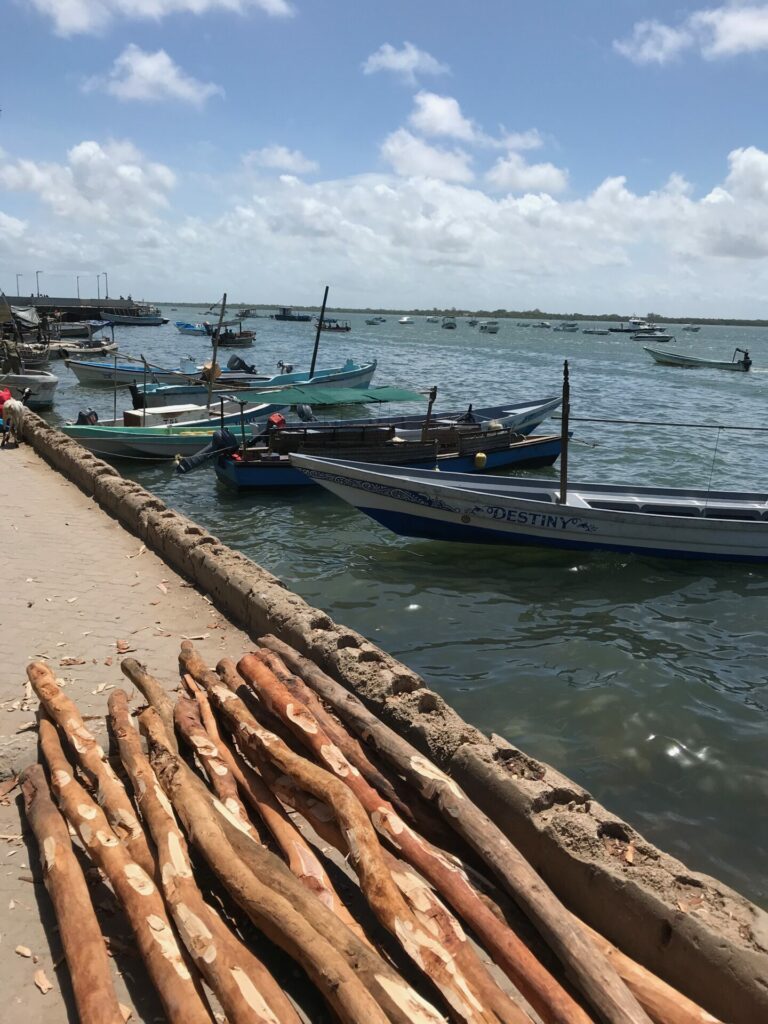
View along the town’s quay.
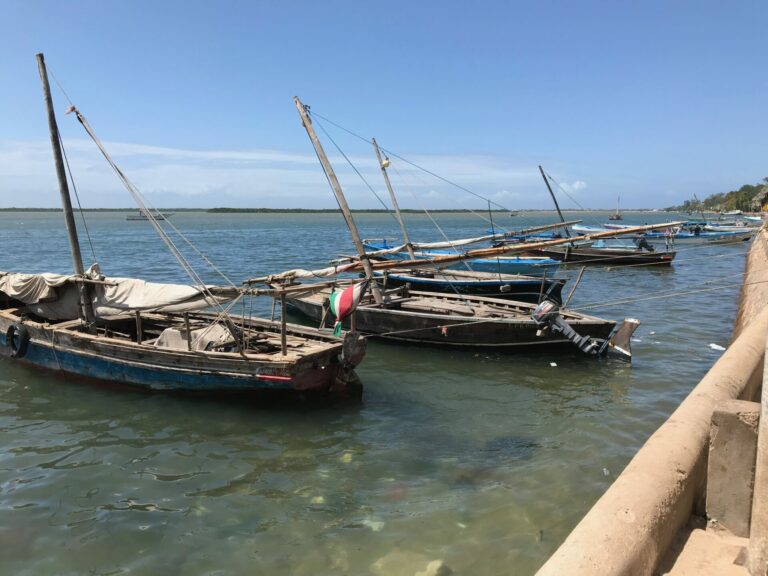
Dhow tied up along the quay. Manda Island in the distance
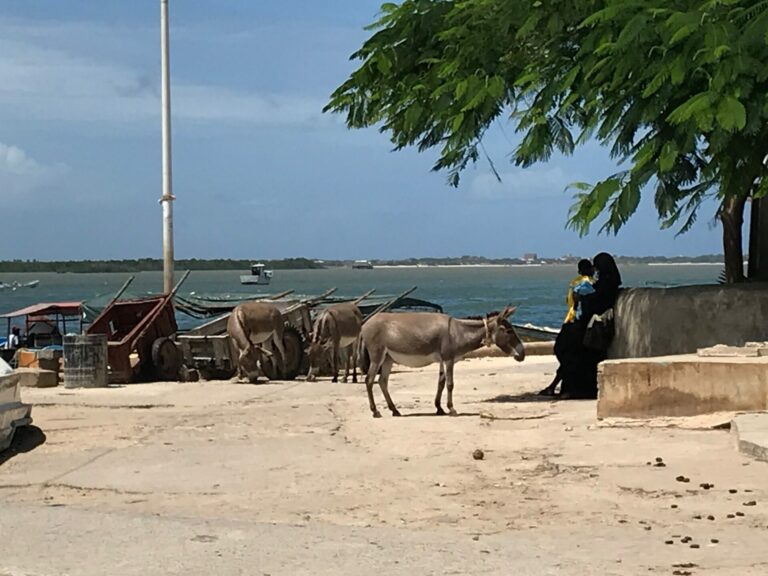
Typical dress for maybe half the women we saw in Lamu Town, not common in Shella.
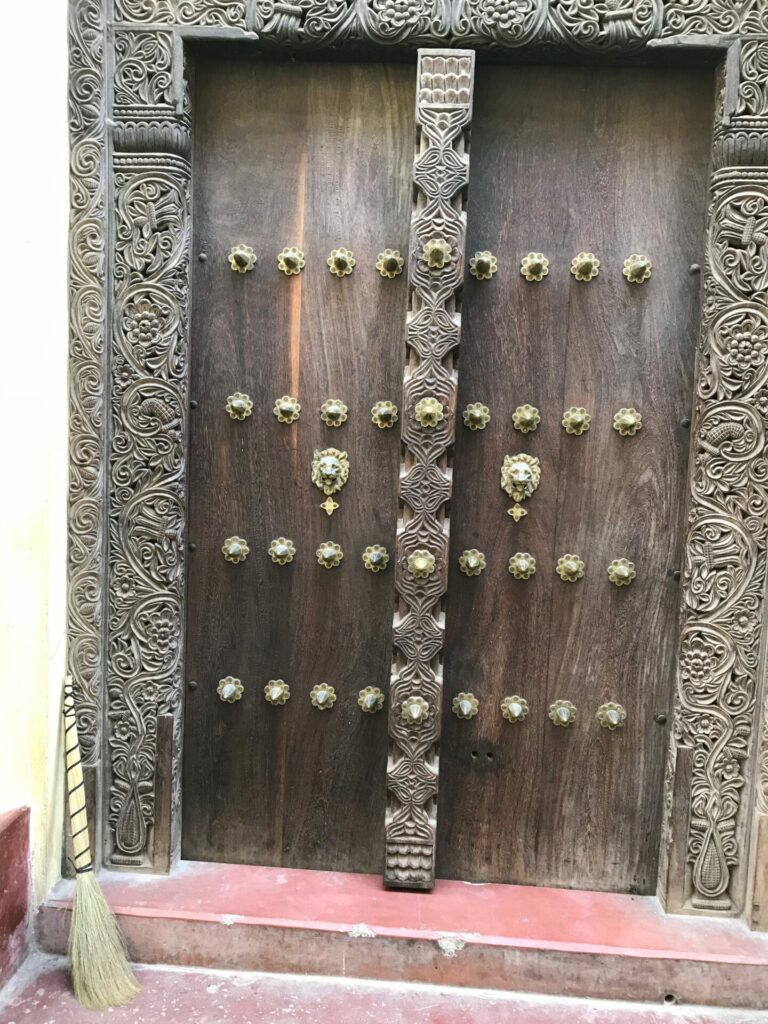
Example of a carved mangrove door.
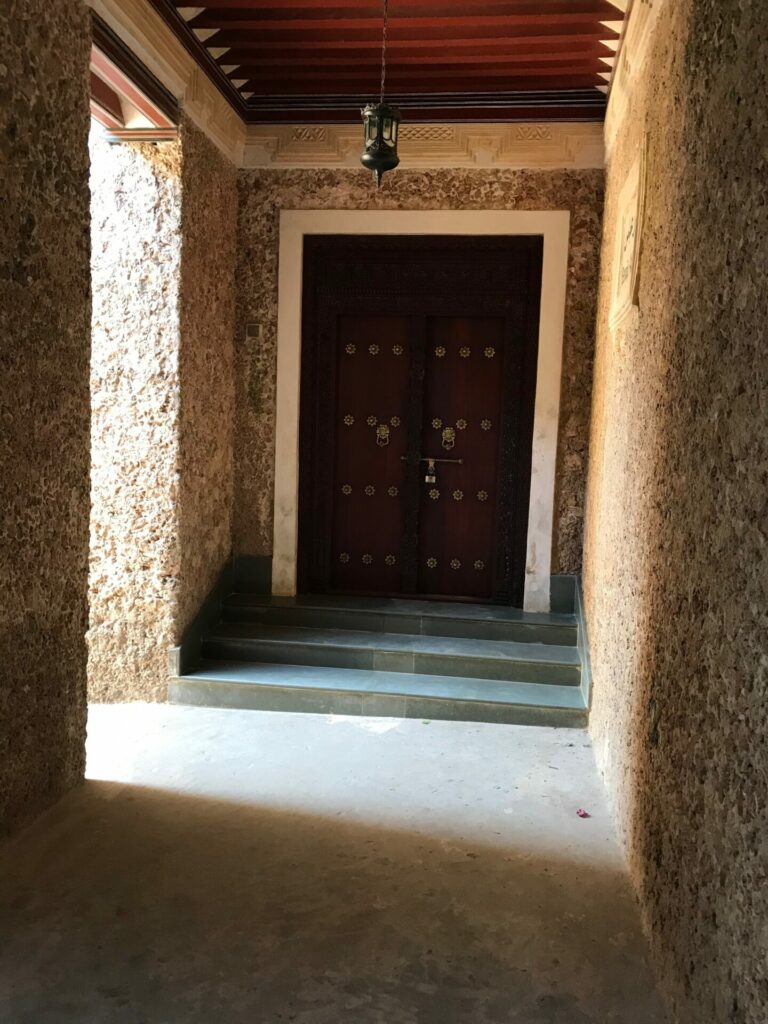
Another carved door, this one at the sheltered entrance to a large home.
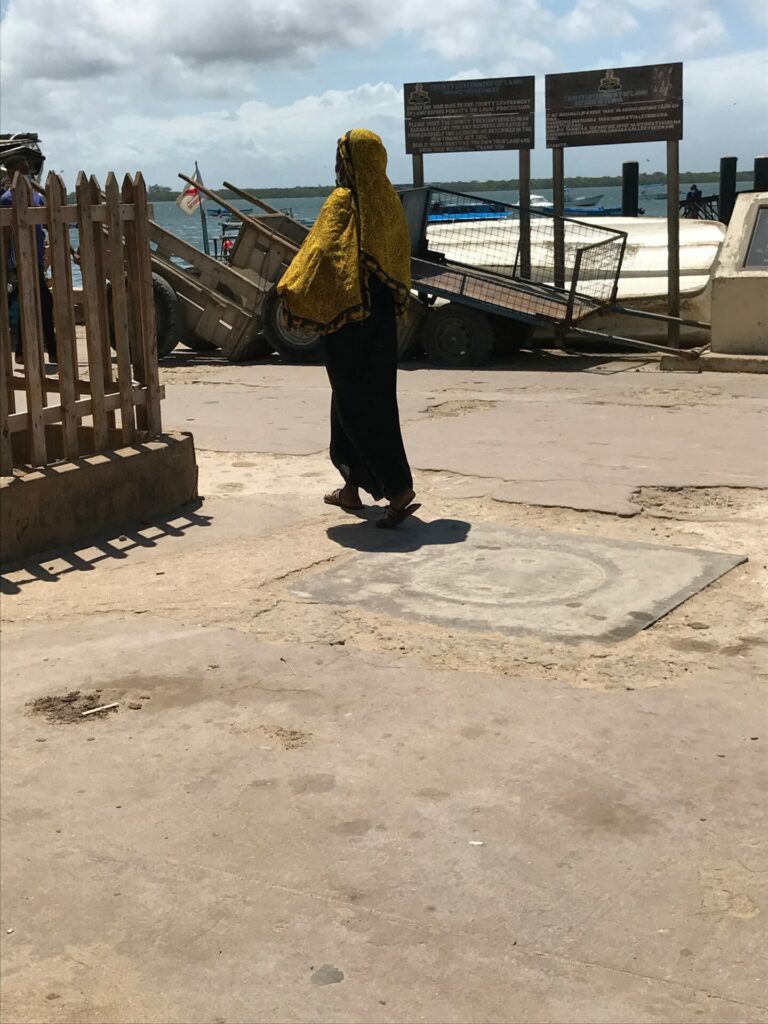
This style clothingwas common—black full length dress, enlivened with a colorful headscarf. We saw local women wearing everything between a full burqa to colorful headscarves & robes to skirts & blouses. No mandatory universal dress code that I observed.
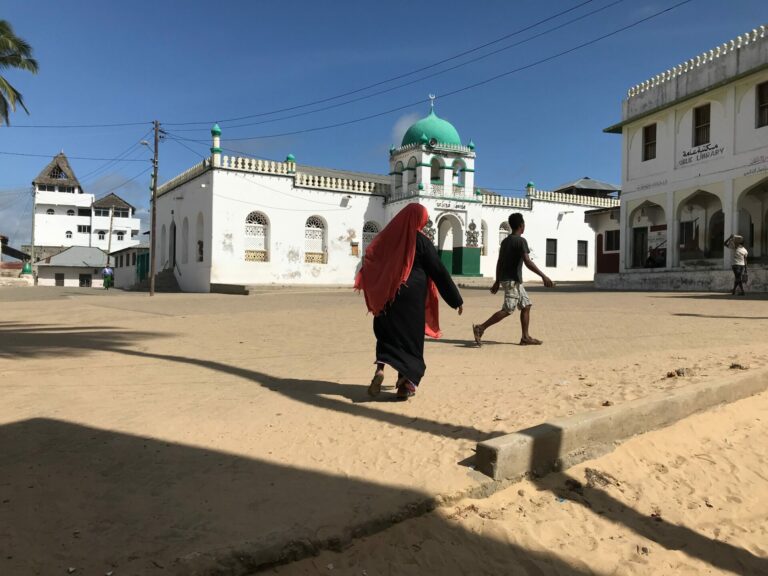
The Riyadha Mosque, founded in the late 19th century, is the oldest, continuously functioning Swahili mosque.
Another woman wearing the traditional black robe with a colorful headscarf. (I assumed the bright headscarves reflected the Swahili love of color.) Note the men opt for (cooler) shorts and tee shirts…
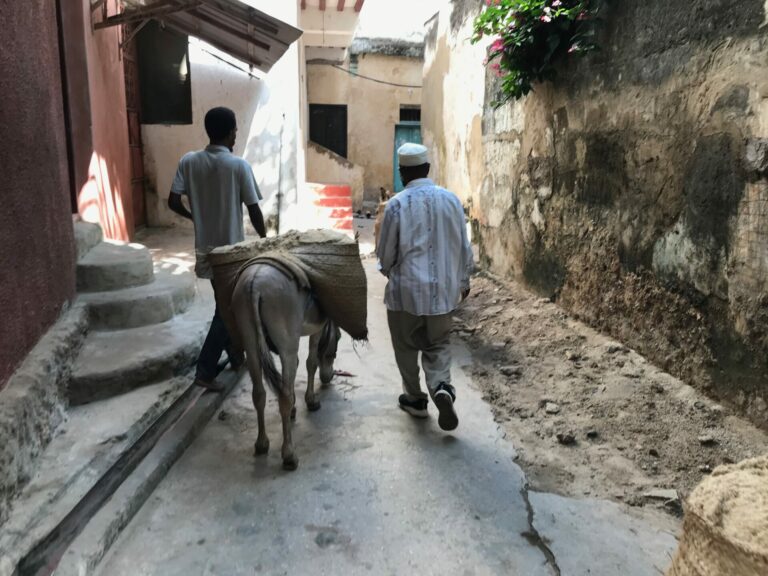
Our guide, on the right, for our tour through the maze of narrow passageways in Lamu Town. He was either the mayor of Lamu or its informal mayor. Definitely knew everyone we passed by. A typical scene of a donkey carrying a burden, in this case, sand.
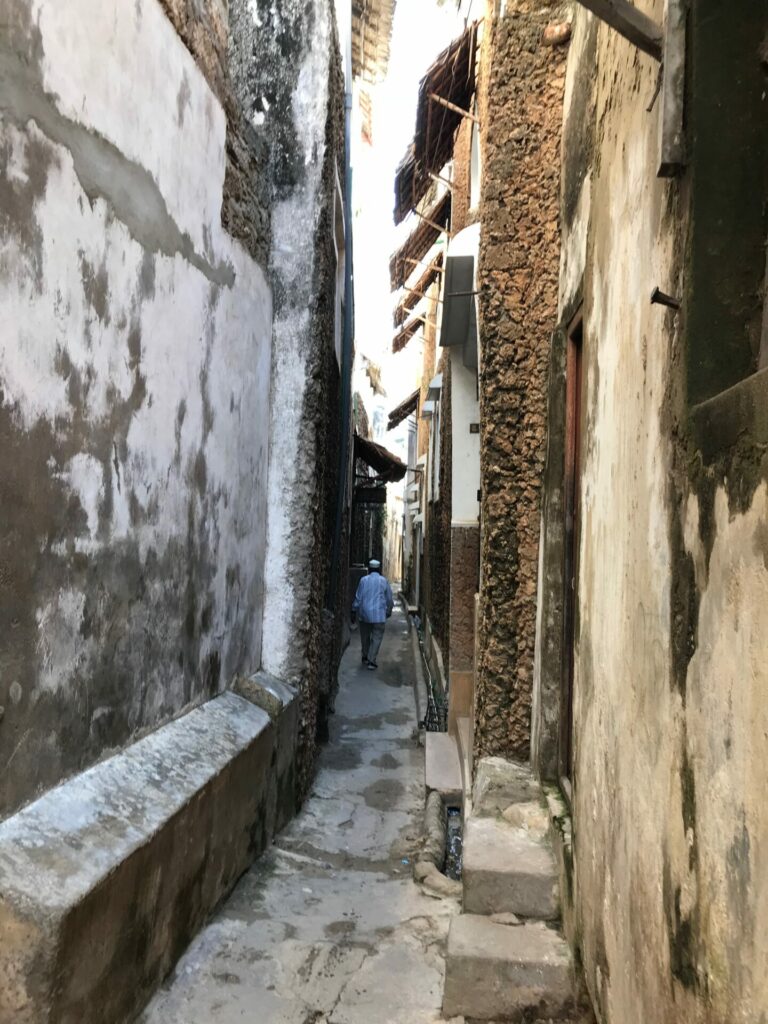
I kept stopping to take a photo and would get left behind. You can see why cars would be pointless in Lamu. Note the gutter for water on the right. Our guide said if we got lost (easy to do), to follow the flow of water as it would take us back to the waterfront…
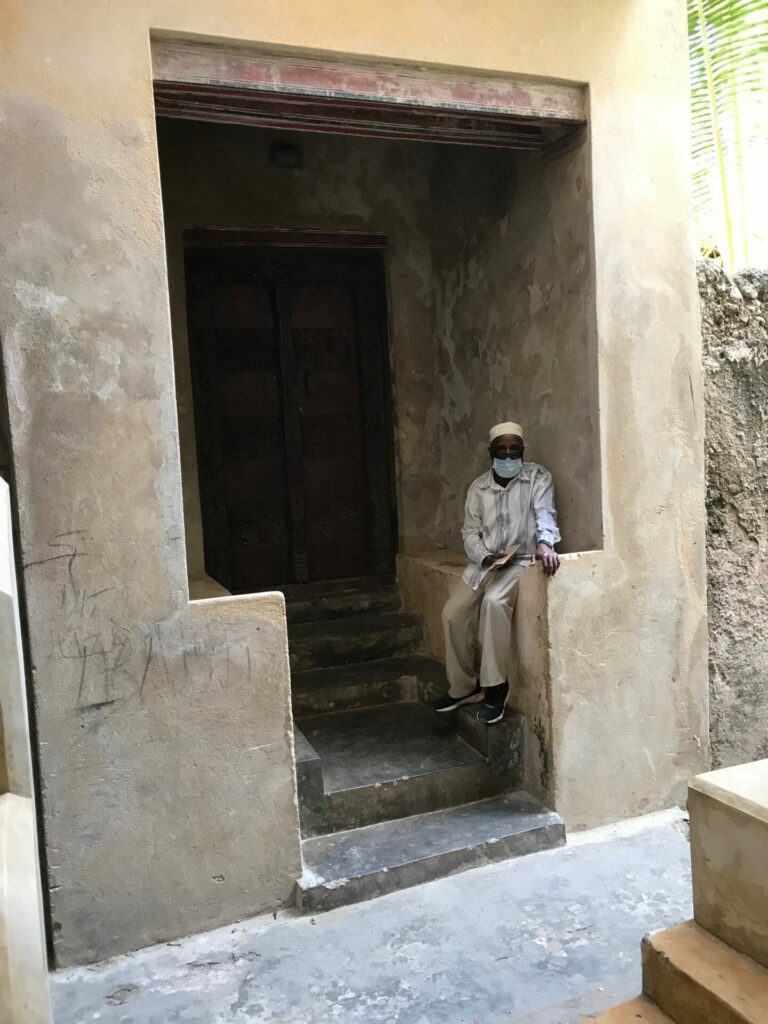
Our guide seated in a vestibule. Sort of a porch where men, not of the household, can visit with the men who live there.

eclare
Looks like an interesting place to explore!
Benw
Very cool pics and place!
Betty
Interesting to see the contrast between what men and women are permitted to wear. The carved doors are sumptuous.
Yutsano
I always enjoy seeing a Muslim community that hasn’t yet been polluted with foreign Wahhabi ideas. The women may all cover their heads, but the methods are all as individual as they are. I understand why this is a UNESCO site. It looks timeless, yet the people seem happy with their lives.
cope
Wonderful pictures. What an interesting place. Thanks.
JanieM
Nice, varied set of pictures of a place that looks fascinating. Interesting about the clothing, including Yutsano’s comment about the lack of Wahhabi influence.
Origuy
I love the carved door. I found Lamu in Google Maps and turned on the satellite layer. Almost the entire community is made up of those passageways. It would be so easy to get lost.
way2blue
@Betty:
Agreed. I remember being upset while visiting Lombok, Indonesia, that the clothing the women wore was so unsuited to the hot humid climate. Here, with the splashes of color, I appreciated the women’s expression of their individuality.
way2blue
@Origuy:
Yes! We were told by Carol (owner of our lodging) not to attempt visiting the town without a guide. He was great in explaining the customs, building styles… and setting aside time to visit the small shops, in particular, a silver shop.
oldster
Very cool photos of a place I would otherwise never see.
Thank you!